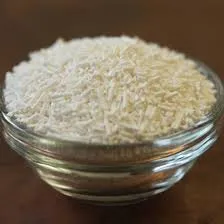
formic acid to oxalic acid
The Transformation of Formic Acid to Oxalic Acid A Chemical Journey
Formic acid (HCOOH) and oxalic acid (C2H2O4) are two important organic acids that play significant roles in various biochemical processes and industrial applications. Understanding the transformation of formic acid to oxalic acid is crucial for chemists and industries alike. This article will delve into the chemistry behind this conversion, its significance, and potential applications of the resultant oxalic acid.
Formic acid, one of the simplest carboxylic acids, was first identified by the chemist John Ray in 1671. Its name is derived from the Latin word “formica,” meaning ant, as the acid was first isolated from ant venom. Formic acid is colorless, has a pungent odor, and is highly soluble in water. It serves as a precursor in various chemical reactions, including the production of more complex organic compounds.
Oxalic acid, on the other hand, is a dicarboxylic acid characterized by the presence of two carboxyl groups (-COOH). It can be found in many plants, including rhubarb and spinach, and is known for its ability to form insoluble complexes with metal ions, making it an important agent in metal extraction and purification processes. The ability to derive oxalic acid from simpler organic compounds such as formic acid illustrates the interconnectedness of organic chemistry.
The conversion of formic acid to oxalic acid typically involves oxidative dimerization, a process where two formic acid molecules react under specific conditions to form oxalic acid
. This transformation often necessitates the presence of an oxidizing agent, such as potassium permanganate (KMnO4) or dichromate (K2Cr2O7), and usually occurs in an aqueous solution. The reaction can be summarized with the following equation2 HCOOH → C2H2O4 + H2O
formic acid to oxalic acid

The reaction conditions, such as temperature and pH, can significantly affect the yield and efficiency of the conversion process. Researchers continuously explore optimized parameters to enhance the production of oxalic acid from formic acid. Additionally, the sustainable production of oxalic acid is a topic of growing interest, particularly in the context of green chemistry, which emphasizes minimizing environmental impact.
The significance of converting formic acid to oxalic acid extends beyond academic curiosity. Oxalic acid has a wide range of applications across different sectors. In the textile industry, it is utilized as a bleaching agent and for dyeing processes. Furthermore, in the food industry, oxalic acid is used as a food preservative and as a component in various food products. Its ability to chelate metal ions also makes it valuable in cleaning agents and rust removal products.
In the field of biochemistry, oxalic acid's presence in plant metabolism has implications for human health. While small amounts can be part of a normal diet, excessive intake of oxalic acid can lead to health issues, including the formation of kidney stones. Understanding its metabolic pathways and derivation from formic acid can aid in the development of dietary guidelines and alternative treatments.
Moreover, from an environmental perspective, the synthesis of oxalic acid from formic acid presents an avenue for utilizing waste products. For instance, the production of formic acid as a byproduct in various chemical processes may provide an economically viable and environmentally friendly method to generate oxalic acid, thus reducing waste and enhancing sustainability.
In conclusion, the transformation of formic acid to oxalic acid is a fascinating chemical process that underscores the complexity and utility of organic compounds. As research advances in this area, we are likely to see more innovative approaches to synthesize oxalic acid, alongside enhanced understanding of its implications across various industries and its impact on health and the environment. Through such transformations, the realm of organic chemistry continues to expand, highlighting the importance of integrating chemical processes with practical applications.
-
Understanding Synthetic Rubber OptionsNewsApr.27,2025
-
Trichloroisocyanuric Acid: Essential for Clean and Safe WaterNewsApr.27,2025
-
Sodium Dichloroisocyanurate: Key to Safe Water TreatmentNewsApr.27,2025
-
Sodium Acid Pyrophosphate: Essential in Modern Food ProcessingNewsApr.27,2025
-
Essential Water Treatment ChemicalsNewsApr.27,2025
-
Denatured Alcohol and Its Industrial UsesNewsApr.27,2025
-
The Versatile Uses of Sodium BicarbonateNewsApr.24,2025
Hebei Tenger Chemical Technology Co., Ltd. focuses on the chemical industry and is committed to the export service of chemical raw materials.
-

view more DiethanolisopropanolamineIn the ever-growing field of chemical solutions, diethanolisopropanolamine (DEIPA) stands out as a versatile and important compound. Due to its unique chemical structure and properties, DEIPA is of interest to various industries including construction, personal care, and agriculture. -

view more TriisopropanolamineTriisopropanolamine (TIPA) alkanol amine substance, is a kind of alcohol amine compound with amino and alcohol hydroxyl, and because of its molecules contains both amino and hydroxyl. -

view more Tetramethyl Thiuram DisulfideTetramethyl thiuram disulfide, also known as TMTD, is a white to light-yellow powder with a distinct sulfur-like odor. It is soluble in organic solvents such as benzene, acetone, and ethyl acetate, making it highly versatile for use in different formulations. TMTD is known for its excellent vulcanization acceleration properties, which makes it a key ingredient in the production of rubber products. Additionally, it acts as an effective fungicide and bactericide, making it valuable in agricultural applications. Its high purity and stability ensure consistent performance, making it a preferred choice for manufacturers across various industries.











